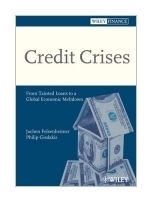Based on the recent subprime crisis, the authors analyze the mechanisms of a financial
market crisis. In order to highlight the basic transmission mechanisms and drivers of a
financial market crisis they discuss the relevant players & strategies, explain the
principles of the financial instruments that were involved in the crisis and analyze how
bubbles emerge, how they burst and what the economic impact might be.
The authors address the following key questions:
* Why do financial markets run into crises over and over again?
* Where do risks for financial crises come from?
* Who are the players in the game?
* Which instruments and strategies can drive a crisis?
* What are the transmission mechanisms onto other markets and the real economy?
* When is it all finally over?
* How to best weather the storm?
Hence, in the prologue the authors highlight the basic framework for a financial crisis
based on the subprime crisis. Here, they will also introduce the important topics and
drivers of the crisis, i.e. the relevant players (banks, investment banks, hedge funds,
real money investors, regulators and rating agencies), the involved instruments (ABS/RMBS,
CDOs, SIV, leveraged loans, Leveraged Super Senior tranches, etc.), the strategies which
caused the crisis or were affected by the meltdown (leveraged exposure to highly
correlated risks), and risks that were underestimated (investors ignored the market risk
that was involved with the leveraged bets). In the subsequent chapter -- which is split
into three parts -- they will explain these important topics in more detail and highlight
the infection and transmission mechanisms. As an example, they introduce the business and
investment concepts of investment banks and hedge funds and how they were involved in the
crisis. Moreover, they explain how structured credit products (such as ABS, CDOs and SIVs)
work and how they were used in order to implement leveraged bets in the markets. Finally,
they highlight how a financial crisis evolves and why certain financial institutions
failed. In the epilogue, they conclude how markets manage a crisis and why the crisis may
also be healthy for the stability of financial markets.
Table of Contents
Foreword.
Preface.
Acknowledgements.
1. Prologue: Chronology of a Crisis.
1.1. The subprime turmoil included all ingredients of a severe financial markets crisis.
1.2. An exemplary credit crisis.
1.3. The chronology of a crisis - The US subprime crisis.
2. Credit Instruments.
2.1. Bonds.
2.2. Loans.
2.3. Credit Default Swaps.
2.4. CDS Indices.
2.5. Tranches.
2.6. Securitization.
3. Credit Players.
3.1. Banks.
3.2. Fannie Mae and Freddy Mac.
3.3. Money Market Funds.
3.4. Central Banks.
3.5. Hedge Funds.
3.6. Bond Insurer.
3.7. Private Equity Sponsors.
4. Credit Strategies.
4.1. Leverage.
4.2. Leveraged Super Senior Tranches.
4.3. Constant Proportion Debt Obligations.
4.4. Structured Investment Vehicles.
4.5. Collateralized Debt Obligations.
4.6. Structured-Squared Madness.
5. The Anatomy of a Credit Crisis.
5.1. Introduction.
5.2. Crisis Classification.
5.3. A brief history of credit crises.
5.4. What can we learn from existing crises models?
5.5. The credit cycle.
6. Epilogue: How Can we Avoid Credit Crises in the Future?
Index
277 pages, Hardcover
Księgarnia nie działa. Nie odpowiadamy na pytania i nie realizujemy zamówien. Do odwolania !.


